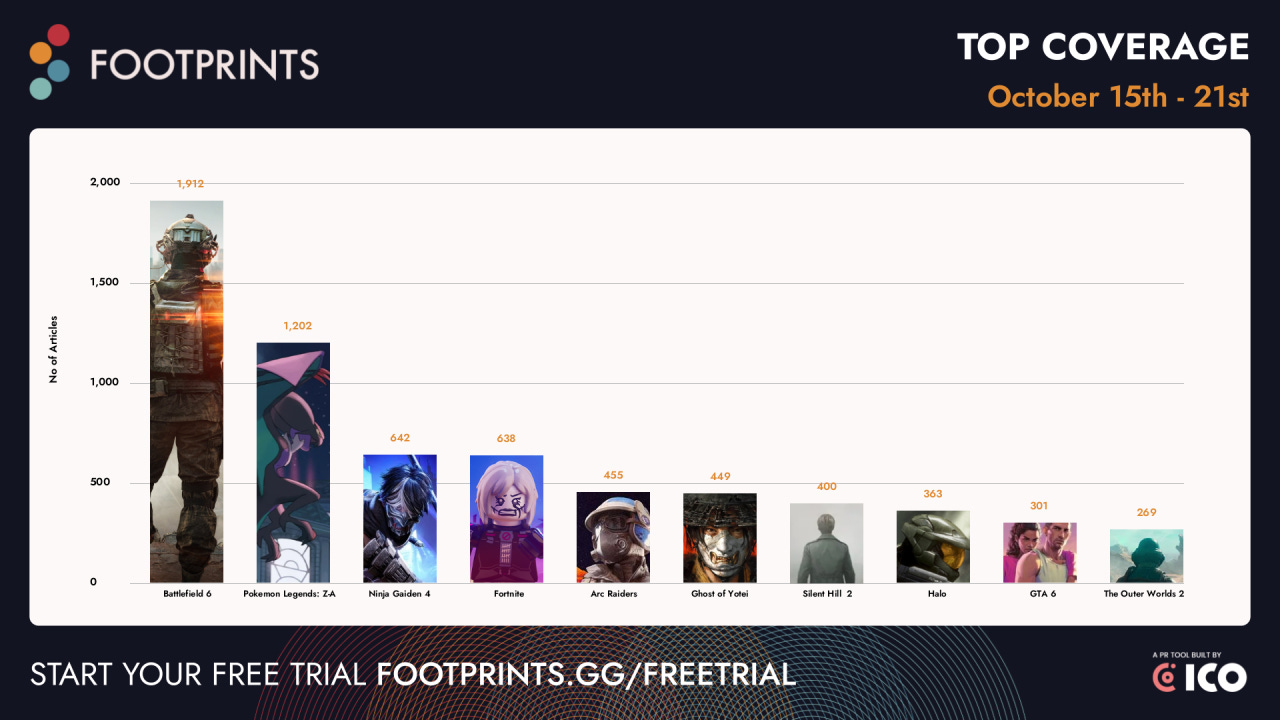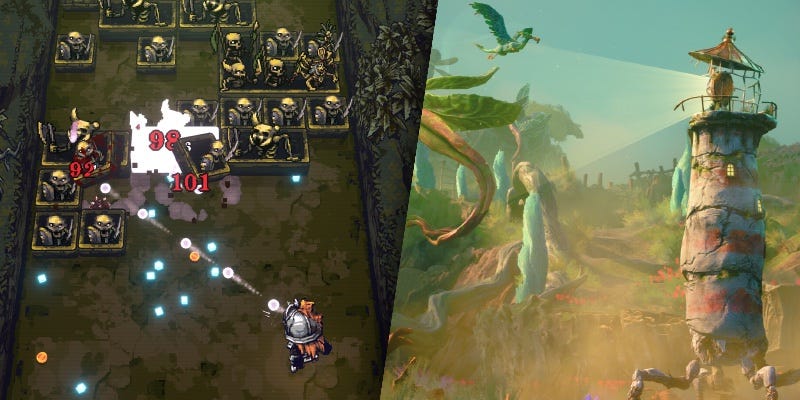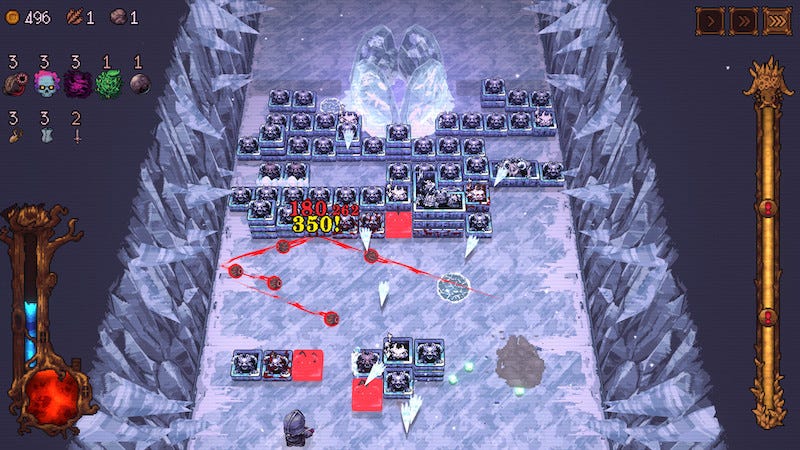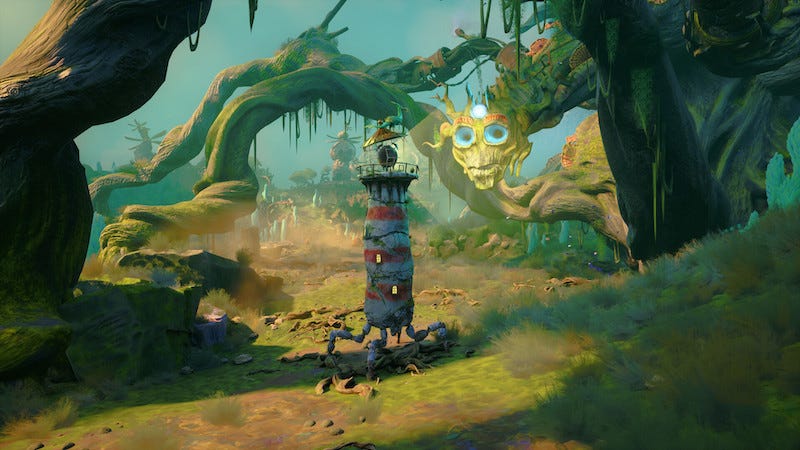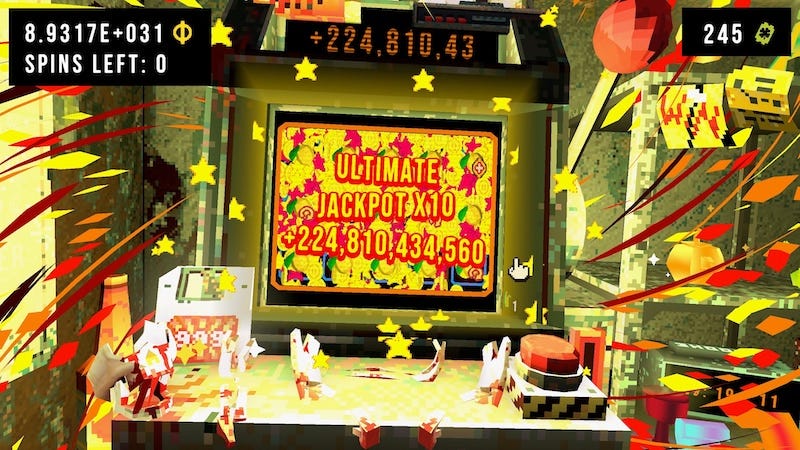Why 'sessionability' radically affects game discovery...
Publikováno: 24.10.2025
A tale of two games. Also: a big Steam debuts week & lots of news.
[The GameDiscoverCo game discovery newsletter is written by ‘how people find your game’ expert & company founder Simon Carless, and is a regular look at how people discover and buy video games in the 2020s.]
As the week tails off, we’ve had a particularly big one for Steam debuts - which is why our ‘sessionability?’ lead story is a bit more of a subjective op-ed than a data deep dive. Reminder: you can read our Steam analysis later as a GDCo Plus or Pro subscriber…
But before we start, want to hear which games sold exactly 1 copy at U.S. physical retail in September 2025? Of course you do - via Circana’s M. Piscatella, they include “(3DS) Imagine Babyz… (PS3) uDraw Pictionary ($5!!)… (PS4) Kao the Kangaroo … (Wii) The Smurfs Dance Party (XBO) Balan Wonderworld (XBX) Batman Begins.”
[WANT LOTS MORE DATA? Companies, get much more ‘Steam deep dive’ & console data SaaS access org-wide via GameDiscoverCo Pro, as 80+ have. And signing up to GDCo Plus gets (like Pro!) the rest of this newsletter and Discord access, plus ‘just’ basic data & more. ]
Game discovery news: Pokebattlefield for the win?
Kicking off our traditional look at game discovery & platform goodness since Tuesday, we’ve got the following:
ICO’s latest Footprints.gg ‘trad media mentions’ chart for games has Battlefield 6 still resigning supreme, followed by Pokemon Legends: Z-A (new Switch 2 launch & DLC!), Ninja Gaiden 4 (freshly debuted), Fortnite, Arc Raiders (playtesting with 185k CCU), and Ghost Of Yotei.
Steam has released its first Steam Labs Experiment since Jan. 2023 in the form of a Steam Personal Calendar page, which is “a look at both recently released and upcoming games, filtered down to the the set of games we think you are most likely to be interested in.” (This calendar-style view is smart, and already popular elsewhere?)
Game Developers Conference 2026 revealed its Festival-style pricing, with all content (except an VIP/exec-level option) for the March 9-13, 2026 event available via a new Festival Pass for $650, which includes parties, concerts, awards. (Some note that there’s no Expo Pass now, however.)
Amazon’s Luna cloud game service has officially relaunched as a Prime perk, and “brings more than 50 games to Prime members at no additional cost, including GameNight, an evolving collection of more than 25 approachable, local multiplayer games designed to bring friends and family together in the living room.”
Bloomberg’s latest scoop is that “Microsoft Corp. is asking its Xbox gaming division to produce profit margins of 30% ‘accountability margins’, a term the company uses in lieu of profit margins.” It notes that S&P estimates say the average profit margin in the game biz is 17-22%. (Weak Xbox rev. growth means more pressure on margins?)
Circana’s Sept. 2025 U.S. game hardware & select software report has spending up 10% to $4.8m, due to “several hit new releases, Nintendo Switch 2 hardware and non-mobile subscriptions.” Borderlands 4 had the “highest launch month dollar sales of any title in franchise history”, and EA Sports FC 26 and NBA 2K26 also performed.
Specifically on Switch 2 in the U.S. in Sept: “September spending on video game hardware increased by 24% when compared to a year ago, reaching $324M. Nintendo Switch 2 sales were again able to offset the double-digit year-on-year percentage declines seen across PlayStation 5, Xbox Series and Switch.” (PS5 decreases are concerning?)
Mini-correction to Tuesday’s Next Fest article: we meant to say that the median Oct. 2025 Next Fest game added <500 Steam wishlists, not <50. (We dropped a zero when roughly multiplying up the 18 Steam followers added by the 1450th game in the demo showcase. That’s a lotta demos, folks…)
If you’d like some more Sarah Bond comments on Xbox’s strategy, we’ve got a Mashable video interview for you. She says that the next Xbox console hardware “is going to be a very premium, very high-end curated experience”, and the idea of “locking [games] to one store or one device is antiquated for most people.”
The Galaxies Autumn Showcase just aired, and here’s the PR for the streaming showcase: 50+ games were shown, including premieres of cyberpunk shooter Defect, survival crafter Unhinged, and party game Dumb Ways To Party. (The YouTube Galaxies video has chapter links for each game trailer.)
PR firm Big Games Machine did an interesting new survey on video game fans’ overlap with other geek markets: “Gamers are interested in many geek culture and gaming-related areas: Board Games (35%) and Card/Party Games (35%) were at the top, Comics (33%) and Sci-Fi/Fantasy Literature (33%) weren’t far behind.”
Max Power Gaming looks into Plants Vs. Brainrots on Roblox and why it’s getting so big (9m CCU at peak, averaging 856k CCU!) And yes, it’s Grow A Garden meets Plants Vs. Zombies with fusion mechanics from Steal A Brainrot. (If your head didn’t explode yet, please watch YouTubers playing the game.)
Microlinks: Xbox Game Pass’ latest adds are The Outer Worlds 2, PowerWash Simulator 2, Football Manager 26 and more; Unity is letting devs run “unified digital stores across mobile, web, and PC directly through the Unity Engine, in partnership with Stripe”; the Xbox dev kit price is going up from $1,500 to $2,000;
Why sessionability majorly affects game discovery
Last week, I was faced with a quandary that’s at the heart of game discovery. I wanted to buy a new game. Should I get Kenny Sun & Devolver’s “brick-breaking, ball-fusing, base-building survival roguelite”Ball X Pit ($20), or Double Fine & Xbox’s “atmospheric puzzle adventure”Keeper($30)?
Like many others, my brain voted for the first game, which has sold 400,000+ copies in its first week (not including Game Pass downloads), and peaked at 34,500 concurrents on Steam. Keeper, on the other hand, peaked at 191 CCU on Steam, despite strong press reviews. Can we work out why?
It’s very difficult to survey people on why they don’t buy specific games. But I at least have anecdotal data on one reason I did buy Ball X Pit. And it’s one that should be familiar to busy adults - the game’s structure being encouraging of short playtimes.
What do I mean by this? Well, for this subgenre of games - of which Balatro is another example:
Its core gameplay is consumable in shorter ‘runs’: a single game of the core gameplay experience in Ball X Pit - you’re moving vertically, shooting bouncable objects to destroy enemies, and regularly upgrading your projectiles - takes at maximum 15 minutes. (And less if you’re not so adept, haha.)
You have choice within ‘runs’ to optimize your experience: as you get better, much like Balatro unlocking new jokers, you’ll get a different - randomly presented - array of in-game upgrades to change up the gameplay, allowing you to improve tactics over time.
There’s an additional ‘meta’ to grind for upgrades: in Ball X Pit’s case, there’s a separate basebuilding element, where the gold you get in-game allows you to plant crops and buy buildings. This means you have a long-term goal in mind, as well.
So if I only have time to play Ball X Pit for 20 minutes, I can still experience two ‘runs’, and buy a new building in the metagame that may unlock a new character later. I can then leave feeling like I had a whole experience and equipped to recommend the game to my friends. This is what we’re calling ‘sessionability’.
This is opposed to linear games (even shorter ones!) like Keeper, where you may want to have completed the whole experience to make a strong recommendation. This will significantly decrease the virality of recommendations, because they won’t compound in the same way that these ‘sessionable’ titles do.
(It’s also difficult to release hype-building demo versions of linear, story-driven titles, because demos miss a lot of context. So then, you just struggle to break out of your filter bubble. In the ResetEra post about Keeper’s lack of scaling, it was clear that lack of knowledge that the game existed affected its Steam numbers…)
There’s also some odd psychological things going on with games like Ball X Pit or Balatro and value for money. For those games, even if I’ve only played them for a couple of hours, I feel like I could play them for much longer, so I’ve got my money’s worth. Even if I actually haven’t played them for very long… (Or is that just me?)
What we’re also talking about here is the introduction of more aggressive ‘hook’ into these games as a medium. In fact, veteran dev Paul Kilduff-Taylor recently posted on LinkedIn about this exact thing with regard to PC/console games:
“This is slightly hard to express but it’s something I’ve been thinking about recently. There really are a lot of overt gambling mechanics as well as gambling-adjacent UX patterns in successful contemporary games at all scales, and that’s just something we should a) take note of and b) be careful with.”
This was a particularly interesting comment to me, because I asked the folks at Future Friends a gambling-adjacency question about recent hit CloverPit(above) We didn’t have space to fit it into our overview of how they hit 750k sold in two weeks. (Their published title has catchy UX and trad gambling inspo all over it.) They said:
“First, Balatro really paved the way for people to understand this type of ‘video game inspired by gambling mechanics’ that isn’t actually gambling - you can’t lose money, it’s not random in the same way, and there’s a defined end.
We also think the horror aesthetic and PS1-style graphics make it pretty clear CloverPit is a video game about combos and strategy; the slot machine is just a mechanic to enable that. We also made sure to highlight the items and combos… in trailers.”
We don’t disagree. Ball X Pit has similar ‘sessionable’ hook, but looks way less like an actual slot machine, and more like a traditional top-down action RPG, but has the same gameplay underpinnings. And as I told Paul Kilduff-Taylor in a subsequent chat about these stronger game mechanics:
“The real issue is probably that these ‘sessionable’ games are often inexpensive and are crowding out gentler games (like e.g. Keeper) because people are just more motivated to play stronger-hook games. In high-choice environments, humans like playing things which tickle their brain more aggressively! That’s difficult to design around.”
Finally, this newsletter is not an excuse to be rude about Keeper. (Fun fact: I worked with its lead creator Lee Petty in a previous life.) So breaking news: I bought Keeper too, and am genuinely enjoying it - the ‘alien environment’ vibes are immense…
And GDCo estimates say that Keeper has ~75% of the players of Ball X Pit on Game Pass, vs. <3% on Steam. That’s evidence that subscription-led players overindex on playing narrative titles, because they worry less about ‘$x per hour’ value issues. So, YMMV - always. But you now have some crunchy food for thought…
